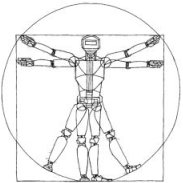Robotics: Science and Systems XVII
Learning Proofs of Motion Planning Infeasibility
Sihui Li, Neil DantamAbstract:
We present a learning-based approach to prove infeasibility of kinematic motion planning problems. Sampling-based motion planners are effective in high-dimensional spaces but are only probabilistically complete. Consequently; these planners cannot provide a definite answer if no plan exists; which is important for high-level scenarios; such as task-motion planning. We propose a combination of bidirectional sampling-based planning (such as RRT-connect) and machine learning to construct an infeasibility proof alongside the two search trees. An infeasibility proof is a closed manifold in the obstacle region of the configuration space that separates the start and goal into disconnected components of the free configuration space. We train the manifold using common machine learning techniques and then triangulate the manifold into a polytope to prove containment in the obstacle region. Under assumptions about learning hyper-parameters and robustness of configuration space optimization; the output is either an infeasibility proof or a motion plan. We demonstrate proof construction for 3-DOF and 4-DOF manipulators and show improvement over previous algorithms.
Bibtex:
@INPROCEEDINGS{LiSihui-RSS-21,
AUTHOR = {Sihui Li AND Neil Dantam},
TITLE = {{Learning Proofs of Motion Planning Infeasibility}},
BOOKTITLE = {Proceedings of Robotics: Science and Systems},
YEAR = {2021},
ADDRESS = {Virtual},
MONTH = {July},
DOI = {10.15607/RSS.2021.XVII.064}
}
